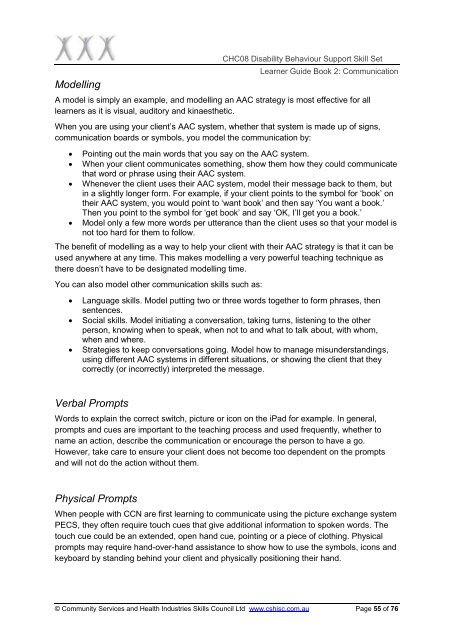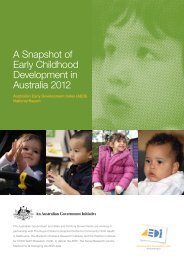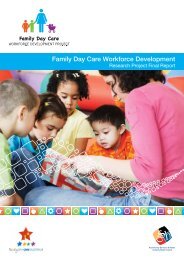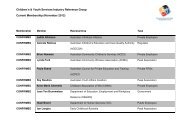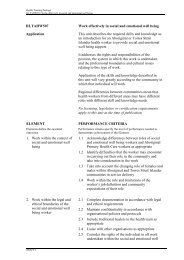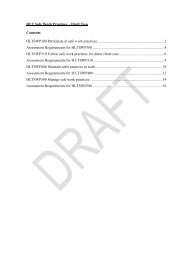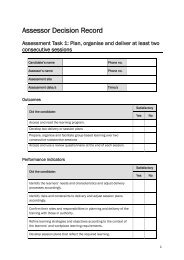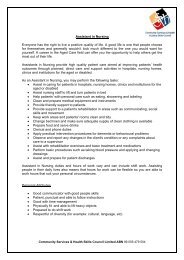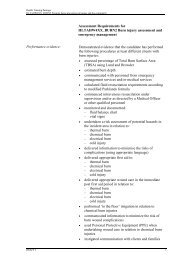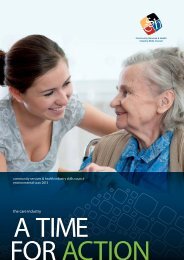CHC08 Disability Behaviour Support Skill Set Learner Resource ...
CHC08 Disability Behaviour Support Skill Set Learner Resource ...
CHC08 Disability Behaviour Support Skill Set Learner Resource ...
You also want an ePaper? Increase the reach of your titles
YUMPU automatically turns print PDFs into web optimized ePapers that Google loves.
Modelling<strong>CHC08</strong> <strong>Disability</strong> <strong>Behaviour</strong> <strong>Support</strong> <strong>Skill</strong> <strong>Set</strong><strong>Learner</strong> Guide Book 2: CommunicationA model is simply an example, and modelling an AAC strategy is most effective for alllearners as it is visual, auditory and kinaesthetic.When you are using your client’s AAC system, whether that system is made up of signs,communication boards or symbols, you model the communication by:Pointing out the main words that you say on the AAC system.When your client communicates something, show them how they could communicatethat word or phrase using their AAC system.Whenever the client uses their AAC system, model their message back to them, butin a slightly longer form. For example, if your client points to the symbol for ‘book’ ontheir AAC system, you would point to ‘want book’ and then say ‘You want a book.’Then you point to the symbol for ‘get book’ and say ‘OK, I’ll get you a book.’Model only a few more words per utterance than the client uses so that your model isnot too hard for them to follow.The benefit of modelling as a way to help your client with their AAC strategy is that it can beused anywhere at any time. This makes modelling a very powerful teaching technique asthere doesn’t have to be designated modelling time.You can also model other communication skills such as:Language skills. Model putting two or three words together to form phrases, thensentences.Social skills. Model initiating a conversation, taking turns, listening to the otherperson, knowing when to speak, when not to and what to talk about, with whom,when and where.Strategies to keep conversations going. Model how to manage misunderstandings,using different AAC systems in different situations, or showing the client that theycorrectly (or incorrectly) interpreted the message.Verbal PromptsWords to explain the correct switch, picture or icon on the iPad for example. In general,prompts and cues are important to the teaching process and used frequently, whether toname an action, describe the communication or encourage the person to have a go.However, take care to ensure your client does not become too dependent on the promptsand will not do the action without them.Physical PromptsWhen people with CCN are first learning to communicate using the picture exchange systemPECS, they often require touch cues that give additional information to spoken words. Thetouch cue could be an extended, open hand cue, pointing or a piece of clothing. Physicalprompts may require hand-over-hand assistance to show how to use the symbols, icons andkeyboard by standing behind your client and physically positioning their hand.© Community Services and Health Industries <strong>Skill</strong>s Council Ltd www.cshisc.com.au Page 55 of 76


